$DEFI Trending, Business Insider Featuring $DEFI, Q4 2025 and Q1 2026 Developments and MORE! – October Development Update
October was a month of strong growth and ...

As many members of our community know, De.Fi wants to onboard as many people as possible into DeFi, so they can experience the benefits of the Finance 3.0 revolution.
In May, we launched our landmark 200-page investor’s guide to DeFi and cryptocurrencies “The Wall Street Era Is Over” to help new and existing users navigate this exciting but complex world. The book is just one of the things we are doing to help users succeed in DeFi, by tracking the best yield farming APYs and keeping them safe by avoiding crypto hacks/scams and malicious contracts.
Following the ‘Proof-of-Concept’ approach, we released the World’s Only Audit Database, smart contract audit services, a free smart contract audit scanner, and a wallet revoke permissions tool.
Today, we are announcing the launch of the De.Fi ecosystem, the safest and most accessible place for DeFi yield farming.
The De.Fi ecosystem offers the best DeFi wallet tracker and crypto research tools. It’s ideal for DeFi participants because it has been built by yield farming experts who want as many people as possible to stay safe and succeed in the Finance 3.0 revolution.
It is made up of a range of decentralized products that have been designed for anyone from a complete novice to an experienced yield farmer. The needs of all current and future users have been considered, alongside the yield farming expertise we have developed since the yield farming expertise we have developed since July 2020.
The De.Fi ecosystem unites a large community of DeFiers, from newbies and part-time enthusiasts to degens and whales. Our community, which has grown tremendously since the project’s launch, includes the following important elements:
The De.Fi dashboard has the perfect combination of asset management and risk management tools to help you succeed and stay safe in DeFi. It enables you to:
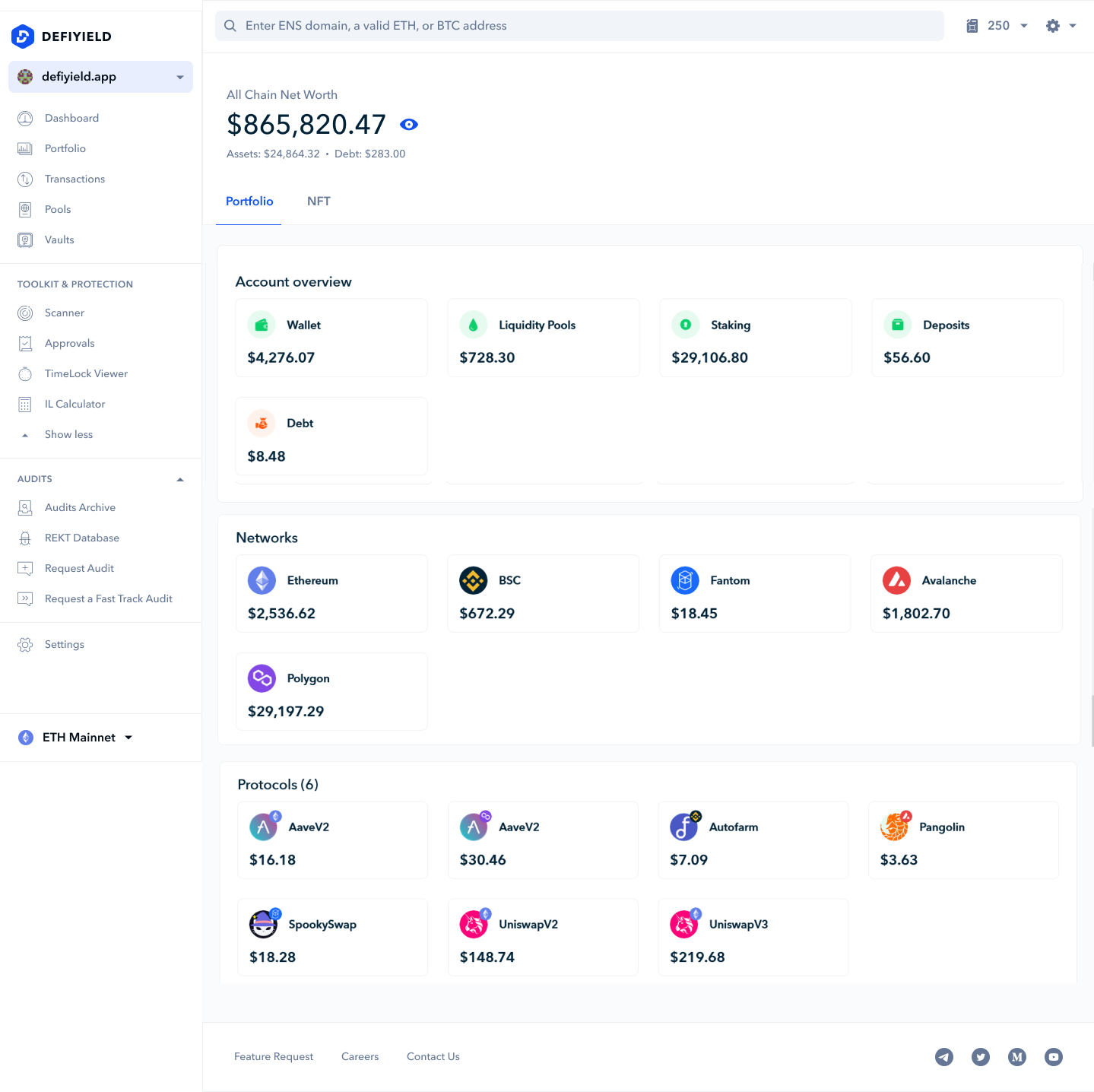
The dashboard is designed to be compatible with Ethereum, Binance Smart Chain, Polygon, Arbitrum, Avalanche, Solana and, Polkadot, as well as and all non-EVM-compatible chains.
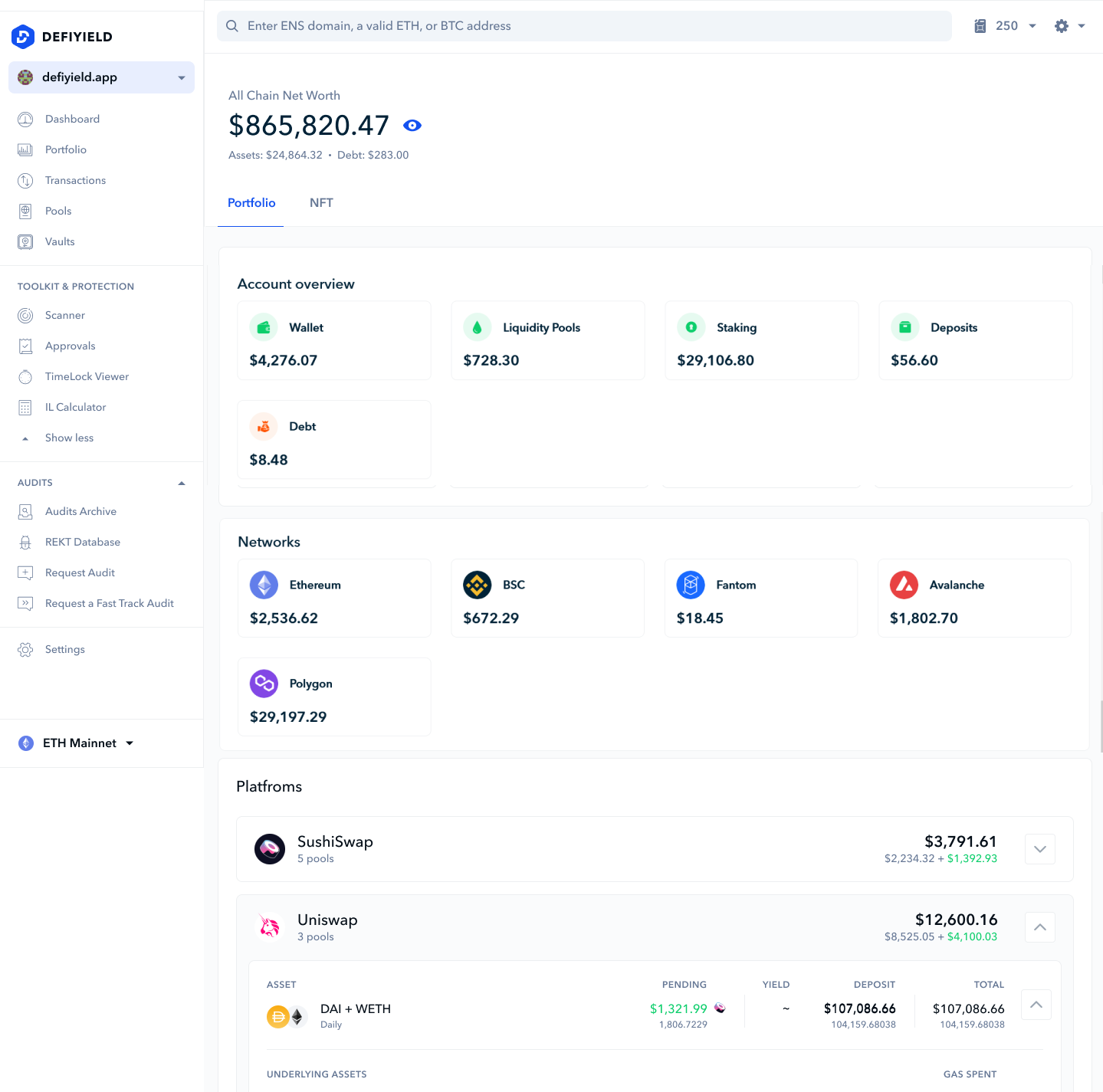
By connecting a crypto wallet and navigating to the Dashboard section, a user will be able to see:
The Portfolio section of the dashboard enables users to see wallet information by tokens, including prices, balances and USD values, as well as to filter portfolio data by blockchain network. Users can also quickly exchange tokens for the best rates on the market.
Significantly, users can see a P&L for each asset in their portfolios.
An asset’s balance change is calculated from incoming and outgoing transfers, received rewards and accrued rewards during the analyzed period. The received rewards are calculated by multiplying the total amount of reward assets and its weighted price, with the value of accruals expressed in relation to the current price of the asset.
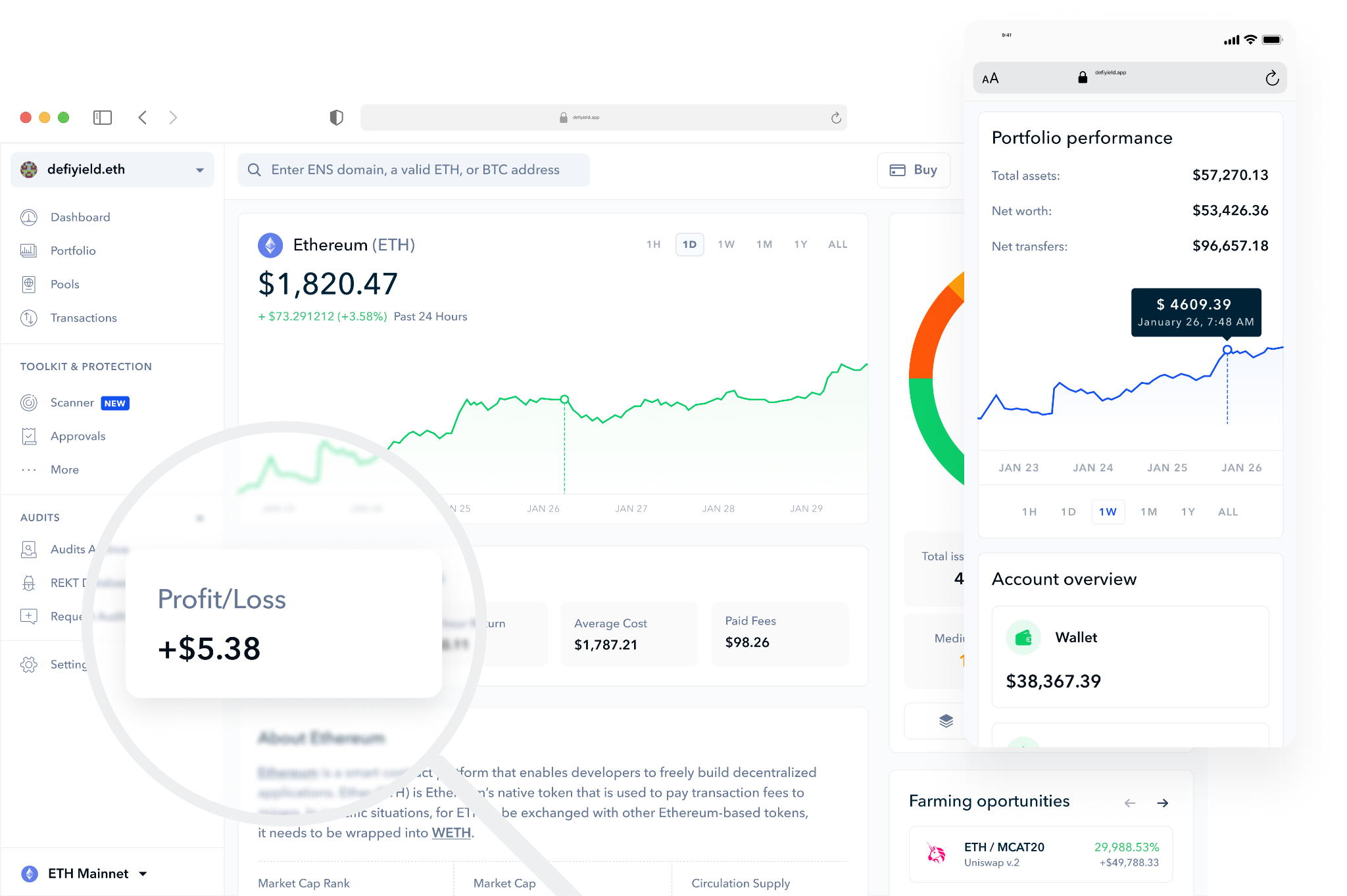
Users can buy crypto with fiat in the fastest and easiest way from the De.Fi dashboard. That’s because it utilizes the RAMP protocol, which aggregates various payment methods.
In this way, De.Fi makes it easy for newbies to get into crypto and establishes its presence as a decentralized Robinhood. On top of making it fast and easy to buy crypto from anywhere on the dashboard, De.Fi makes DeFi easy for newbies through a self-explanatory UI,clear transaction terms and approachable fees.
The Pools **section allows users to review the pools they’ve provided liquidity to and the fees they’ve earned from doing so. Furthermore,, it’s possible to add or remove liquidity, rebalance funds and claim rewards in an instant.

The Transaction **tab displays historical data, including pending transactions, and allows a user to speed up or cancel a transaction.
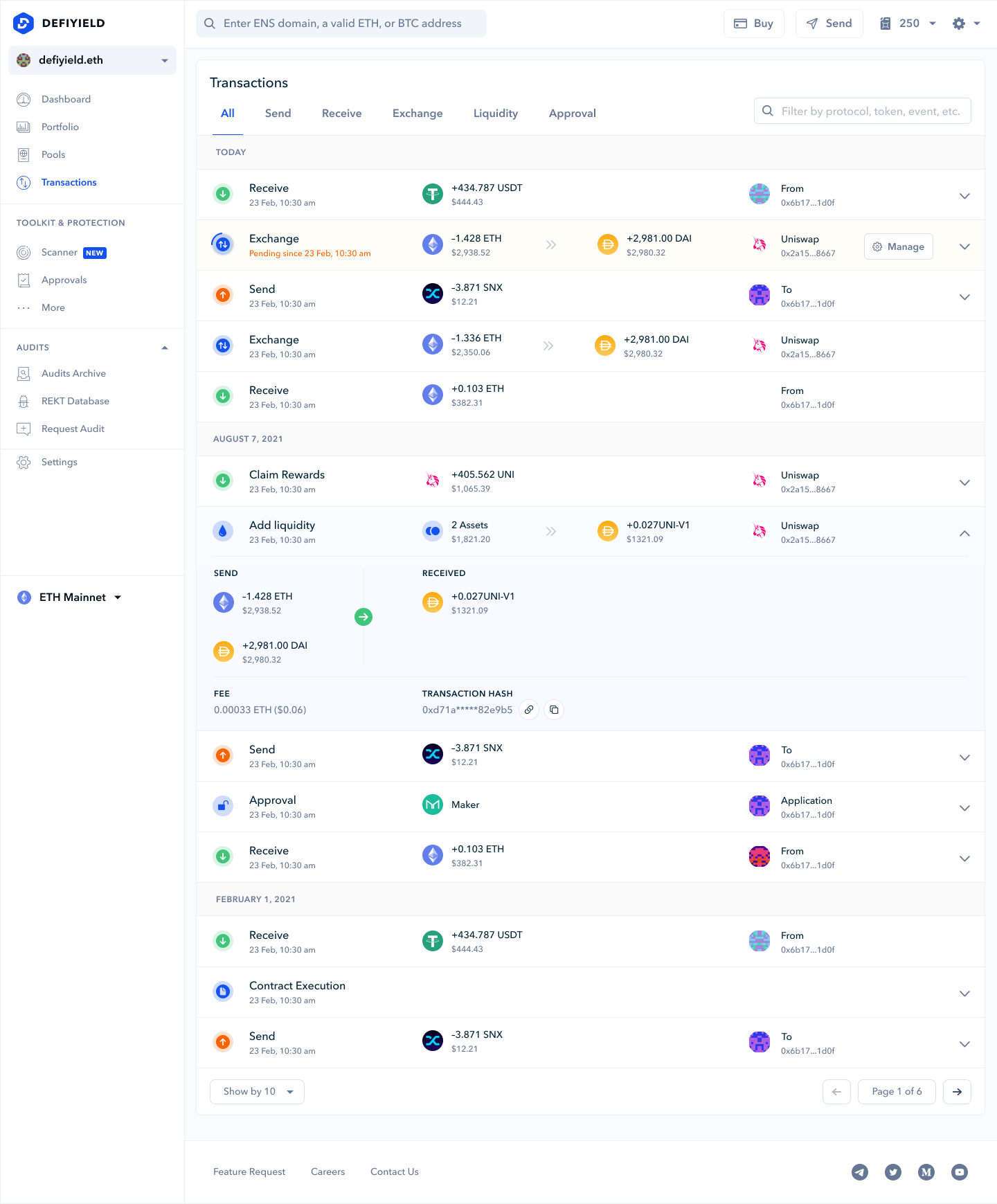
Users can explore liquidity provision opportunities through the dashboard too. Therefore you can see the list of pools offered by the biggest DeFi projects and sort them by achieved liquidity reserves and yield.
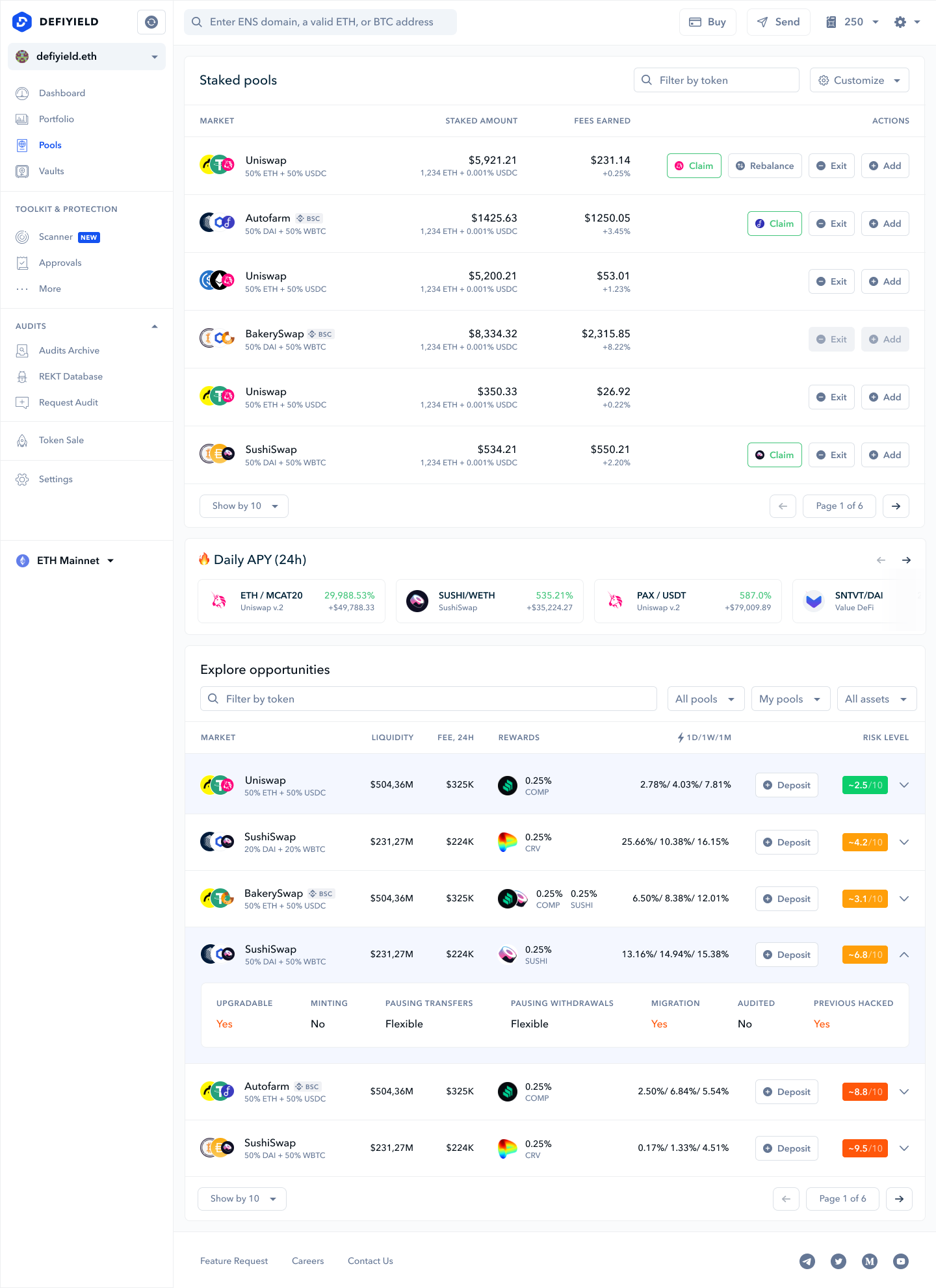
Historical data is available for Ethereum, with users able to see the pools they have participated in and the transaction histories of their wallets.
Besides being armed with all the information for effective crypto asset analysis and management, De.Fi users are also notified about risks associated with their DeFi investments.
This is what makes the De.Fi dashboard really stand out, as there are no other services of this kind available today.
How De.Fi users are warned about DeFi risks. Essentially, the dashboard alerts users to DeFi risks by reviewing the list of contracts that have been approved by the user’s wallet.
This is important because, in order to use a Dapp, users need to allow the smart contracts of the Dapp to transfer the user’s tokens.
A lot of these Dapps choose to implement ‘unlimited token approvals’ in their smart contracts by default, which means the smart contract can approve an unlimited amount of the user’s tokens to be transferred. Usually, this choice is made to improve the user experience, so the user can agree to unlimited token approvals once and then interact with the Dapp on an ongoing basis.
The problem is that many users agree to unlimited token approvals without knowing they have or without researching the Dapp enough to ensure it is not a scam that is waiting to extract the user’s funds. For these reasons, agreeing to unlimited token approvals can be risky and users must be aware of all the contracts they have approved in this way.
For each approved smart contract address, users will see a list of exposed tokens that includes their balances, approved amounts and risk exposure valued in USD. The De.Fi dashboard allows users to modify approved token amounts or completely decline the allowances.
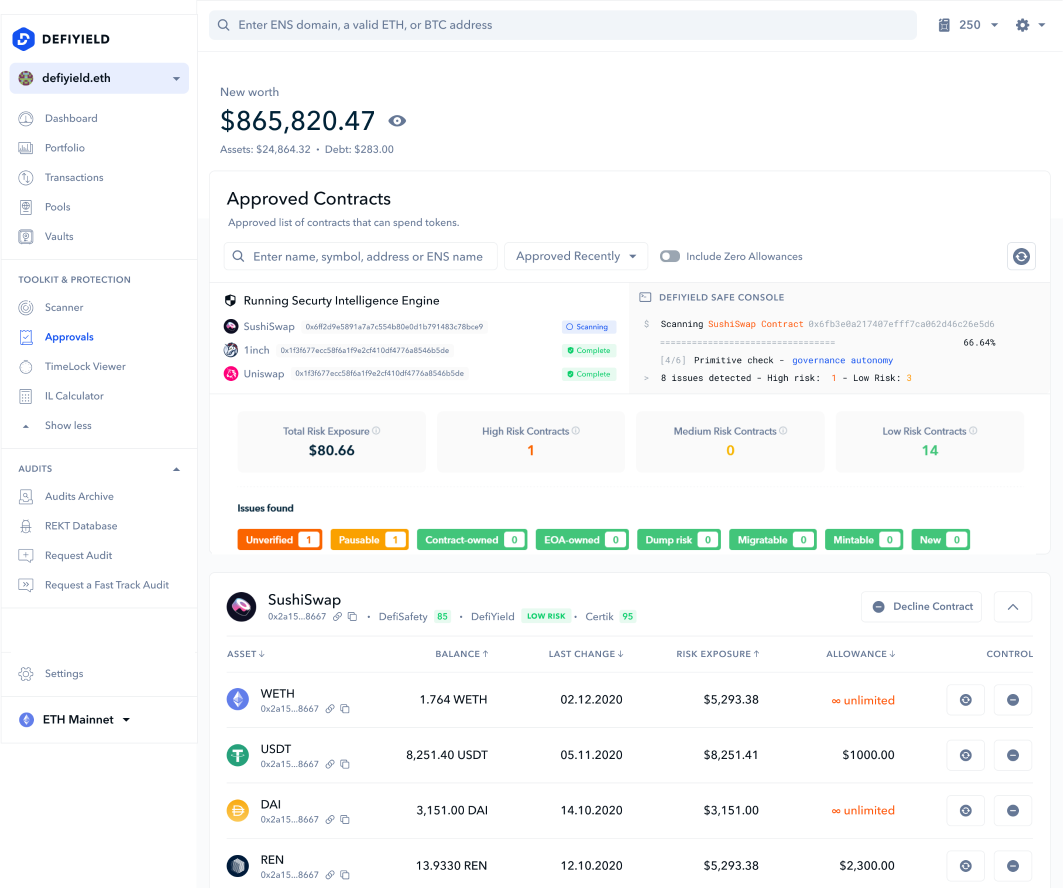
All contracts approved by a user are automatically scanned against the following safety metrics:
Users are automatically informed about risks through the Smart Notifications system, which pops up a message about the threat once a risky smart contract has been identifed.
The list of scanned vulnerabilities will be widened to a comprehensive risk assessment similar to the one provided by De.Fi`s smart contract scanner, covering a wide range of known smart contract vulnerabilities such as reentrancy, unchecked return values, function access control problems, missing event arithmetics, etc. Moreover, the security scanning of approved contracts will cover all the most frequent DeFi-specific smart contract vulnerabilities, including privileged functions endangering user funds.
We’ll be launching our next product to join the ecosystem, called De.Fi SHIELD soon but that doesn’t mean you can’t start reaping the benefits of using our other products now.
The SHIELD will open the new era of the Decentralized Finance investor’s toolkit.
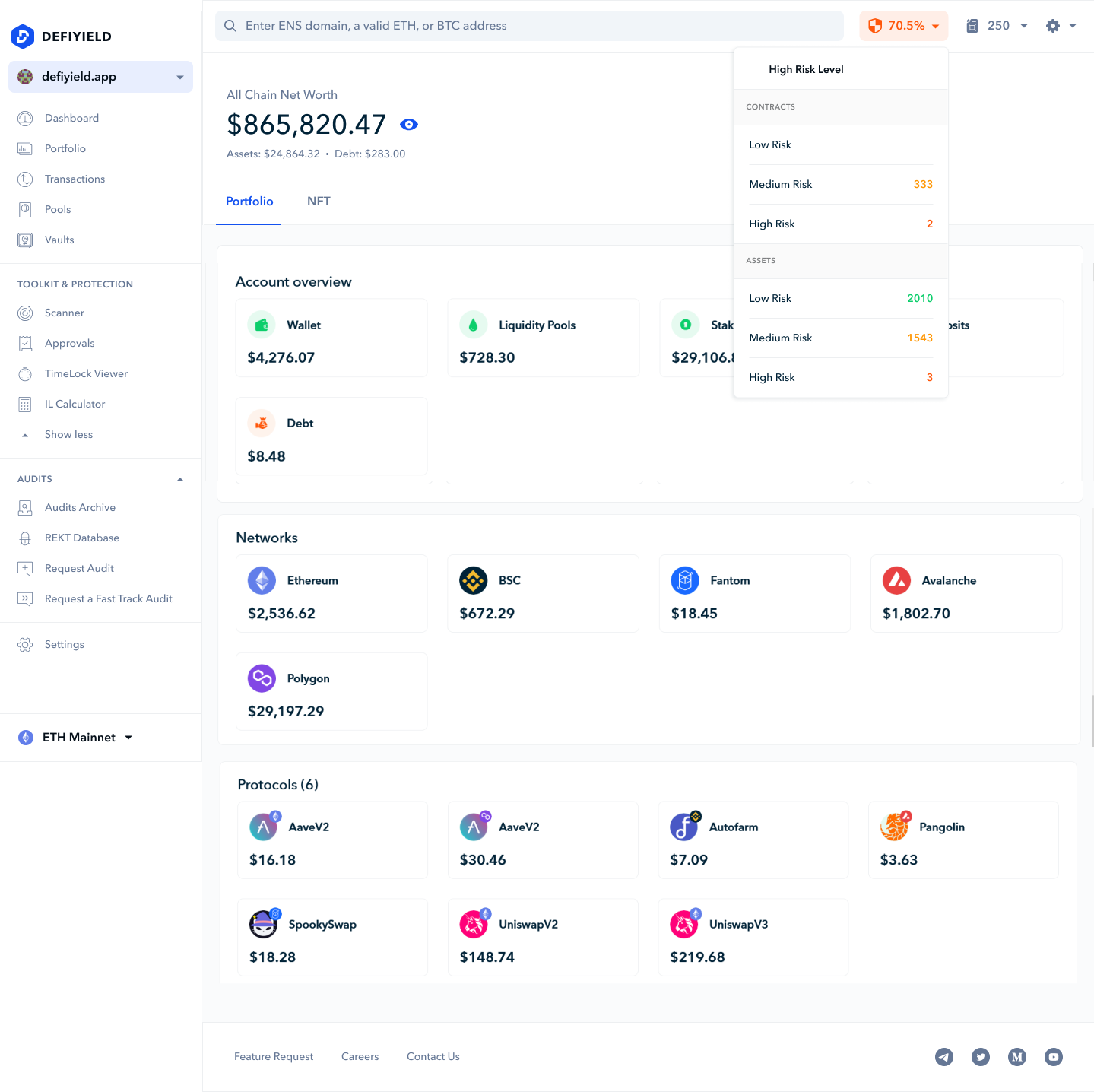
All you need to do is connect your Metamask or other preferred wallet and you’re ready to go!
In the meantime, stay safe and successful!
What is TVL (Total Value Locked) in DeFi?
Upcoming Crypto Airdrops for 2023
And join us on Twitter and Telegram!
Good luck in farming!
October was a month of strong growth and ...
September was a month of global...
August was a month of major...
From major Explore Yields upgrades to...
June was a month of big releases and improvements across...
The end of May brought important updates across...
© De.Fi. All rights reserved.